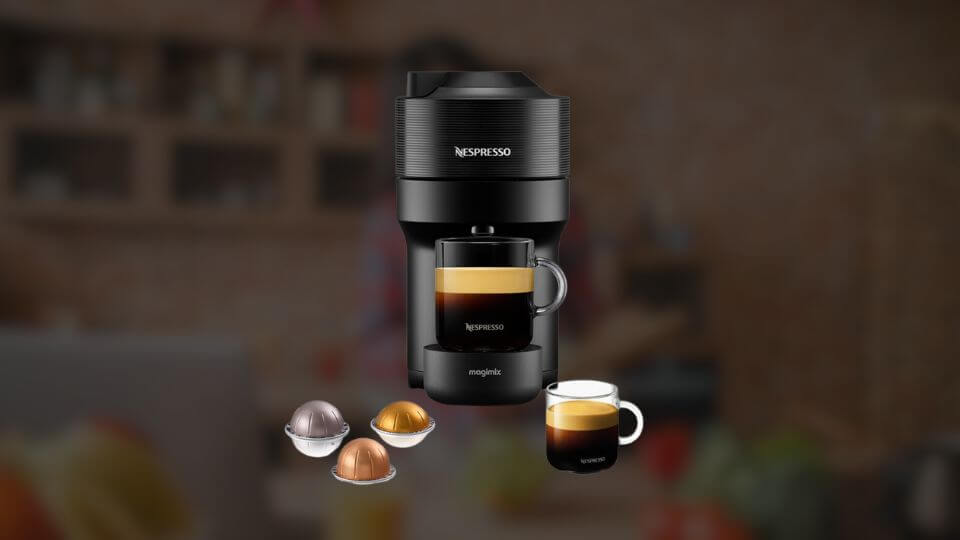
The Breville espresso machine is a really handy appliance that makes it so easy for us to brew our own coffee and keep us energized. It is very popular for its performance, ease of use, and durability.
However, there are occasions where users run into problems with the Breville espresso machine’s cleaning cycle, a.k.a backflush cycle, which is its automated cleaning mechanism.
In this post, I’ll give you a quick rundown of the reasons why a Breville cleaning cycle not working, and how to fix them.
Why Is the Breville Cleaning Cycle Not Working?
In most cases, when a Breville espresso machine’s cleaning cycle does not work, it is due to a simple reason rather than serious technical malfunctions.
Let’s have a look at what they are and what can be done to fix the cleaning mechanism in each scenario:
Using The Wrong Cleaning Solution
The cleaning solution comes in the form of a tablet that has to be put into the portafilter of the Breville machine before starting the cleaning cycle.
If the solution used is something other than what the manufacturer of the Breville espresso machine recommends, it can damage the internal parts and leave a residue that affects the machine’s performance and the taste of the coffee brewed.
So, using the wrong cleaning solution could be the reason behind the Breville cleaning cycle not working properly.
Solution: Use The Recommended Cleaning Solution
ALWAYS make sure to use the cleaning solution recommended by the manufacturer when you run your Breville machine’s cleaning cycle.
Using The Wrong Size Or Type Of Backflush Disk
The Backflush disk that has to be put on the portafilter of the Breville espresso machine can make the cleaning cycle not work properly if it’s the wrong size or type.
The disk should not be too big or too small.
It also matters whether it has a center hole or not.
Older Breville models had Backflush disks with center holes to let water and air flow through, but more modern ones do not.
These backflush disks with no center holes are called blind disks.
If the backflush disk is of the wrong size or has a center hole where it should not or vice versa, it can affect the water pressure and flow and the cleaning cycle might not work as it should.
Solution: Pick A Backflush Disk Of The Correct Size And Type
- Find out what the appropriate diameter of the backflush disk to use.
- Find out if your Breville espresso machine needs a disk with a center hole or a blind disk.
You can check out the user instruction manual or contact Breville customer care service to determine what size and type of backflush disk to use.
Damaged Or Clogged Valve
If the solenoid valve that controls the water flow through the Breville espresso machine is damaged or clogged up with coffee oil, residue, or minerals, it can result in the cleaning cycle not working too.
If you hear unusual noises during the cleaning cycle, do not hear the distinctive click of the valve, or see any leaking – a faulty valve is probably the reason.
Solution: Descale The Machine Or Replace The Valve
The first thing you should try in this situation is to use a descaling solution on the valve. If the valve is only clogged up, this should do the trick.
If that does not fix it, the valve is damaged. Unfortunately, you have to replace it with a new one.
If you have hard water at your home, descaling your Breville espresso machine every three to four months, or every three to four weeks can improve the longevity of the valve.
Clogged Grouphead
Finally, If the group head of your Breville espresso machine is clogged with mineral build-up, coffee oil, or any other residue, it can make the cleaning cycle not work properly as well.
Solution: Clean The Grouphead
Here’s how you clean the group head of your Breville espresso machine:
- Power off and unplug your Breville espresso machine.
- Remove the portafilter and the basket from the group head.
- Using the tool that comes with the machine, take the shower screen of the group head off.
- If there is mineral build-up, soak the shower screen in a solution of water and vinegar in a 1:1 ratio for 30 minutes, and rinse thoroughly.
- If there is residue or debris on the shower screen, clean it with a soft-bristled brush.
- Then mix a cleaning solution recommended by the manufacturer with water following the instructions of the manufacturer and soak the shower screen in it for a few minutes.
- Scrub the shower screen with a soft-bristled brush and rinse well.
- Clean inside the group head gasket with a soft-bristled brush and a piece of soft cloth soaked with the cleaning solution.
- Wipe the shower screen and inside the gasket dry with a soft cloth.
- Reassemble the group head.
- Run water through the machine for a few rounds to expel any remaining cleaning solution.
- Re-attach the portafilter and the basket.
- Test the machine.
You should also bear in mind that regular descaling can help prevent mineral build-up on the group head.
Quick Recap
If the cleaning cycle of your Breville espresso machine is not working like it is supposed to, it could be due to the use of improper cleaning solution, incompatible backflush disk, clogged or damaged solenoid valve, or a clogged-up group head.
These issues can be resolved by using a recommended cleaning solution, using a backflush disk of the right size and type, cleaning or replacing the valve, and cleaning the group head respectively.

